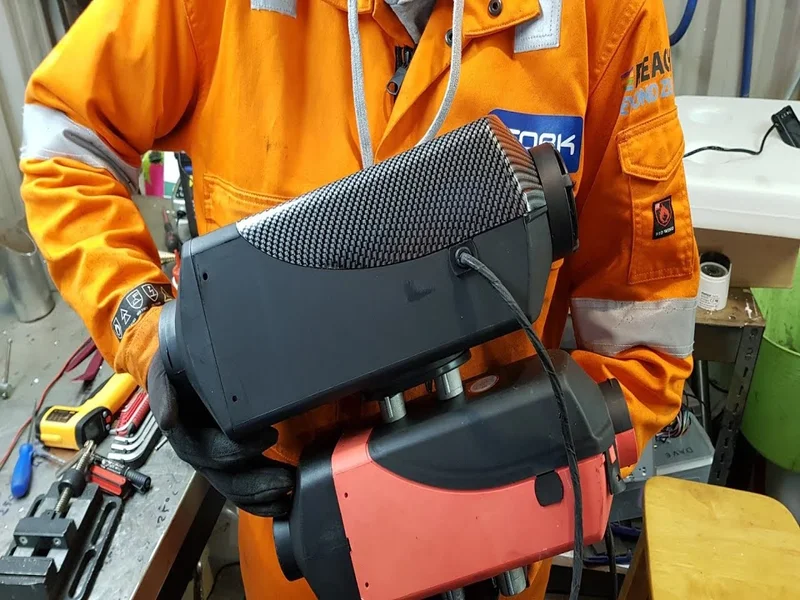Though plenty of people thinks of RV life as something to do in the summertime – and only the summertime – the truth is these homes on wheels are a lot harder in winter weather than most expect.
Yes, you really can use your RV all year round. Including when the temperatures get particularly chilly.
Just how low can you go?
Well, using your RV in temperatures as low as 20°F (or even lower) won’t be all that uncomfortable – or unsafe – as long as you take the necessary precautions.
More on that in just a minute!
How Cold is Too Cold for Camping in an RV?
As soon as you start to get down to 20°F or so things get a little chilly inside any RV, including those that have been super winterized.
The overwhelming majority of RVs on the road today are going to have a bare minimum of insulation tucked behind the walls. That’s because the overwhelming majority of RV owners generally don’t take these vehicles out in wintery.
Some of that has to do with the fact that these vehicles aren’t exactly the most roadworthy things when the snow starts to pile up on highways and byways. But a lot of it just has to do with the whole concept of an RV.
Most folks that own these love them because of the freedom they offer.
If you have the ability to literally pick up your home and drive it somewhere else, including somewhere warmer when the temperatures start to drop, a lot of folks choose to go down that path.
Just how cold is too cold for an RV, though?
Well, if you insulate the walls of your RV, invest in winterized solutions that really work, and pack plenty of warm clothes and extra blankets you can probably stay comfortable down to 0°F or so.
Beyond that, though, you’re going to be pretty miserable even if the heater is running on full blast.
As soon as you start to dip into the negative temperatures things get even more uncomfortable and even start to become unsafe.
Extremely cold temperatures (anything that approaches -20°F to -30°F or lower) can cause serious damage to your RV. You run the risk of pipes freezing for sure, but you also run the risk of your engine simply not starting – or even turning over.
That’s trouble.
Try and keep your RV in areas where the temperatures aren’t going to dip any lower than 10°F for 15°F whenever possible. Ideally, you stay a little bit warmer than that, even.
Insulate Your RV for Better Performance in Cold (And Warm) Weather
One of the most important things you should do if you expect to use your RV and a lot of cold weather conditions is to have the whole thing insulated (or re-insulated, as need be).
Like we mentioned a second ago, most RVs have the absolute bare minimum of insulation in the walls if they have any at all.
That’s not going to cut it if you’re trying to spend winters in this house on wheels.
The decision to insulate your RV isn’t a minor one to make.
A project like this is going to involve popping out quite a bit of the interior of your RV, insulating everything, and then putting everything back together. It’s a labor-intensive project to be sure (which means expensive if you decide to outsource it), so understand that going in.
Still, if you are dead set on using your RV when the weather starts to get chilly (or downright frigid, as the case may be) you absolutely need to insulate your setup.
Tips and Tricks for RVing When the Temperatures Drop
There are a couple of other things you can do to improve the quality of life in your RV as temperatures start to drop.
Let’s run through a couple of them below!
Leverage Multiple Forms of Heating
Multiple forms of heating can be a game-changer when you are trying to keep the interior of your RV livable when temperatures sneak below freezing.
The heater core system in your RV is obviously going to be the main component in keeping your cabin nice and toasty.
You might also want to consider investing in electric infrared heaters, though.
A couple of these strategically placed throughout your RV (particularly in the spaces you spend a lot of time in) can rapidly speed up the heating process and maintain higher temperatures, too.
Just make sure that these infrared heaters are running 100% on electricity (and that your RV can handle the extra load). There is a variety of 12V heaters, both portable and fixed. So you can run them from a leisure battery installed in your RV while camping outside camping grounds.
Some portable heaters run off of propane and these absolutely CANNOT be run inside of your RV. They give off toxic gases that can become incredibly dangerous – not to mention flammable – in a hurry if used inside of an enclosed structure like an RV.
However, it is worth paying attention to diesel heaters. They are installed outside and are safe for continuous use. They burn diesel fuel in a double chamber, and the air is heated through a heat exchanger. One of the inconveniences is the noise of some diesel heaters when installed without insulation, but more on diesel heaters in a separate article explaining working principles, fuel consumption, and heating capacity of affordable models.
You don’t need to worry about that when trying to stay warm.
Stick to the electric-based infrared heaters paired with your heater core system and you should be good to go.
You Can Never Have Too Many Layers
Of course, you’ll also want to make sure that you have plenty of clothing and blankets to layer when the temperatures start to drop.
This is especially important when you find yourself in a freak storm or surprise temperatures drop that you just weren’t anticipating.
A couple of extra sweatshirts, a pair of really baggy flannel pajama pants, and some big down or down alternative blankets (or even a couple of “mummy” sleeping bags) can guarantee that you stay warm when you otherwise would have frozen.
Layer up – it’s the smart thing to do!
Run RV Specific Antifreeze Through Your Plumbing System
Winterizing your RV is a huge piece of the puzzle.
You’re going to want to make sure that you have RV-specific antifreeze running throughout your plumbing system, helping to protect against your plumbing pipes and components from freezing, popping, and causing leaks throughout the entirety of your home on wheels.
RV-specific antifreeze is a different animal altogether compared to traditional antifreeze.
This is the kind of antifreeze designed to be run through RV plumbing components, and antifreeze that gets kind of slushy and kind of sludgy when temperatures drop but still allows your plumbing system to operate as normal.
If you have the budget, try and spring for RV antifreeze made with propylene glycol. The other kind of RV antifreeze – the one that uses ethanol – is a little more dangerous to use, especially if you aren’t going to be semi-permanently parking your RV over the winter and not using it.
The propylene glycol mixture is the way to go (even if it’s a little bit on the more expensive side of things).
Keep Potable Water on Hand
Drinking water is always a priority when you are traveling in your RV, but it is especially important to have it on hand when the temperature starts to drop.
There’s nothing worse than having your plumbing freeze up when you need it most, cutting you off from sometimes literally life-saving water supplies you were counting on.
Keep at least 5 or 10 gallons of clean drinking water on hand as an emergency reserve at all times. This should get you through the most sticky situations without a lot of headaches, without a lot of hassle, and without a lot of panics.
Of course, if you absolutely have to, it might not be a bad idea to dip outside and scoop up some snow or chisel off some ice to melt inside of your RV if you’re in a real fix.
In those situations, though, you need to make sure that you boil the water and run it through a water filtration system. Don’t just use – and especially don’t just consume – buckets of snow that you’ve melted down.
That’s a surefire recipe for disaster and will only make an already sketchy situation worse.
Always – ALWAYS – Have an Emergency Plan
Even after taking all the precautions we mentioned above – and doing anything else you can do to make your RV more comfortable in cold temperatures – things might still go sideways.
Today’s RVs are better belts and more capable than any RVs in the past. These things can go more places and thrive in more extreme temperatures than anything else before.
At the same time, though, they aren’t infallible.
Like everything else man-made the potential for something to break down, the potential for something to malfunction, and the potential for something to go on the fritz is always there.
You need to have a plan to account for these kinds of emergencies, particularly in extreme weather conditions.
You definitely don’t want to find yourself both caught off guard by one of these emergencies and fully unprepared for what to do next.
Draw up a plan, stock up on emergency supplies, and keep everything close at hand inside of your RV. Regularly run through your plan so that you know it backward and forwards, but also look for ways that you can improve that plan as well.
Keep all of this in mind (and keep your RV out of temperatures approaching negative degrees Fahrenheit) and you should be pretty good to go!








